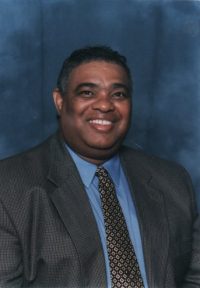About Us
Who are we?
Centenary Methodist Episcopal Church, an African-American church, formed after the Civil War with the withdrawal of African-American members from Trinity United Methodist Church. In 1866, the congregation purchased its current building at 60 Wentworth Street, Charleston, South Carolina.
Historical Notes:
Prior to the establishment of Centenary United Methodist Church, free people of color had worshiped in the galley of Trinity United Methodist Church. While the congregation was encouraged to continue worshipping in the gallery they decided to establish their own church. The Reverend T. Willard Lewis and the Reverend Alonzo Webster from New England assisted in the establishment of the new church, starting services in a room of the Memminger Normal School (and the first site of the Avery Normal Institute, at the corner of Beaufain and St. Phillip Streets). Due to growth of membership, a larger structure was necessary.
In 1865, Bishop Osmen C. Baker of the Methodist Episcopal Church appointed the Reverend Alonzo Webster of Vermont to take charge of the unsettled congregation. Bishop Baker was impressed by the earnest prayers of the congregation for a suitable building and promised them the aid of the Missionary Society of New England in their effort.
The Wentworth Street Baptist Church (formerly the Second Baptist Church) offered their building for sale. The structure at 60 Wentworth Street was designed by Edward Brickle White and erected in 1842. After a sacrificial struggle that challenged the congregation’s devotion, the required purchase price of $20,000 in gold was paid on April 10, 1866. Some of the gold had to be shipped from New York due to the lack of availability in Charleston. The deed was prepared to the Missionary Society of the Methodist Episcopal Church on April 10, 1866, to be held in trust by Alonzo Webster, Charles Holloway, George Shrewsbury, John Gibbs, Jacob Mills, Samuel Weston, January Holmes and Archibald Walker, trustees of the church. The first seven pastors (with the exception of the Reverend W.O. Weston, who carried out the unexpired term of the Reverend T. Willard Lewis) were white. The Reverend Joshua E. Wilson was the first African-American pastor to serve.
The Quarterly Conference of the Charleston District appointed the Reverend W.H. Lawrence to secure the deed of the property of Centenary United Methodist Church from Missionary Society of New England vesting title to the Charleston Board of Trustees on November 29, 1884.
SOURCES: Lilly, Edward G., edited. “Historic Churches of Charleston South Carolina” Charleston: Legerton and Co., 1966.
“The History of Centenary United Methodist Church: April 10, 1866-April 10, 2005.” Charleston: Pearl’s Desktop Publishing Services 2005.
